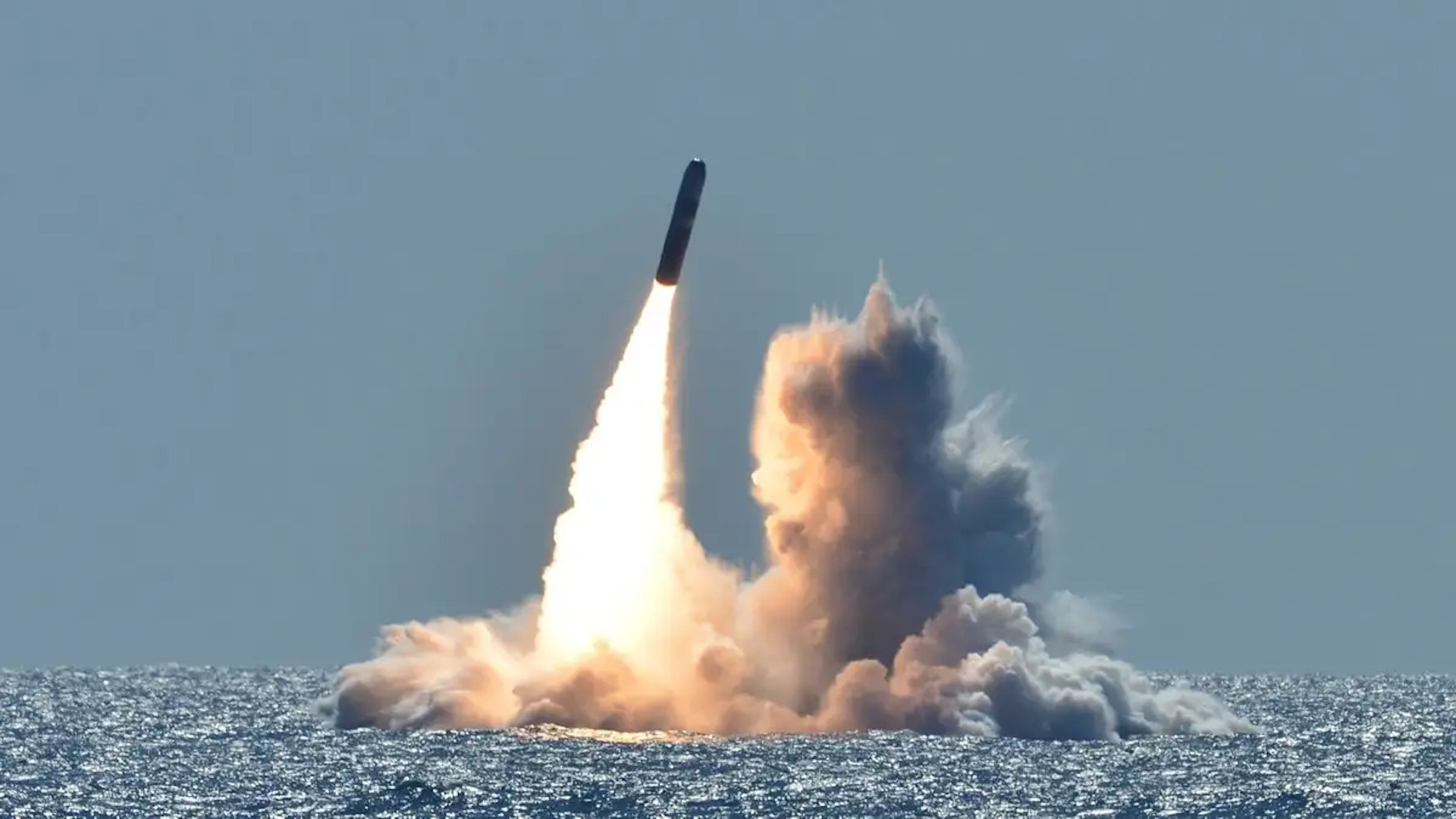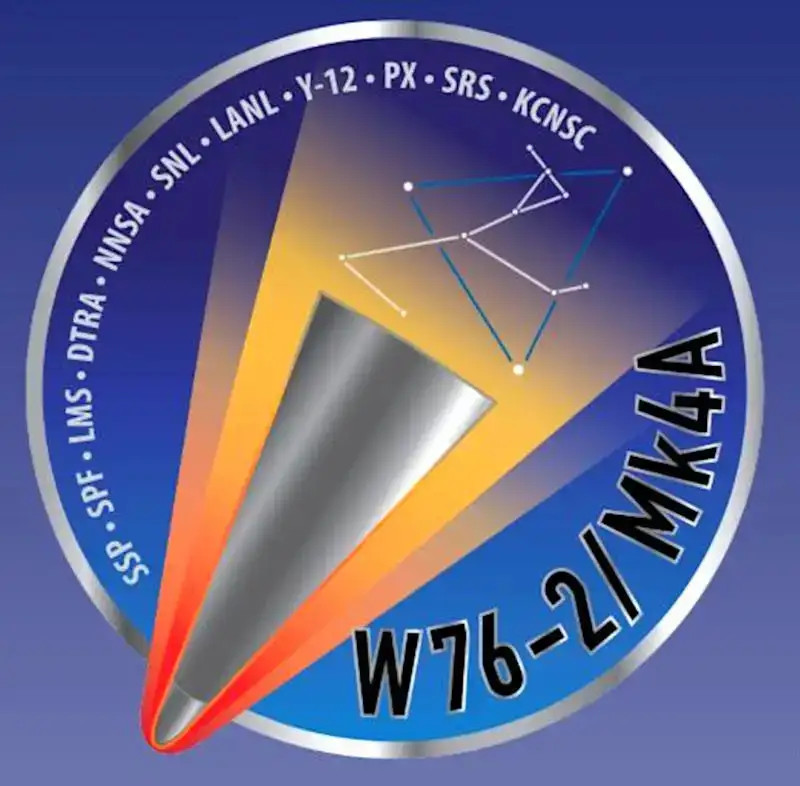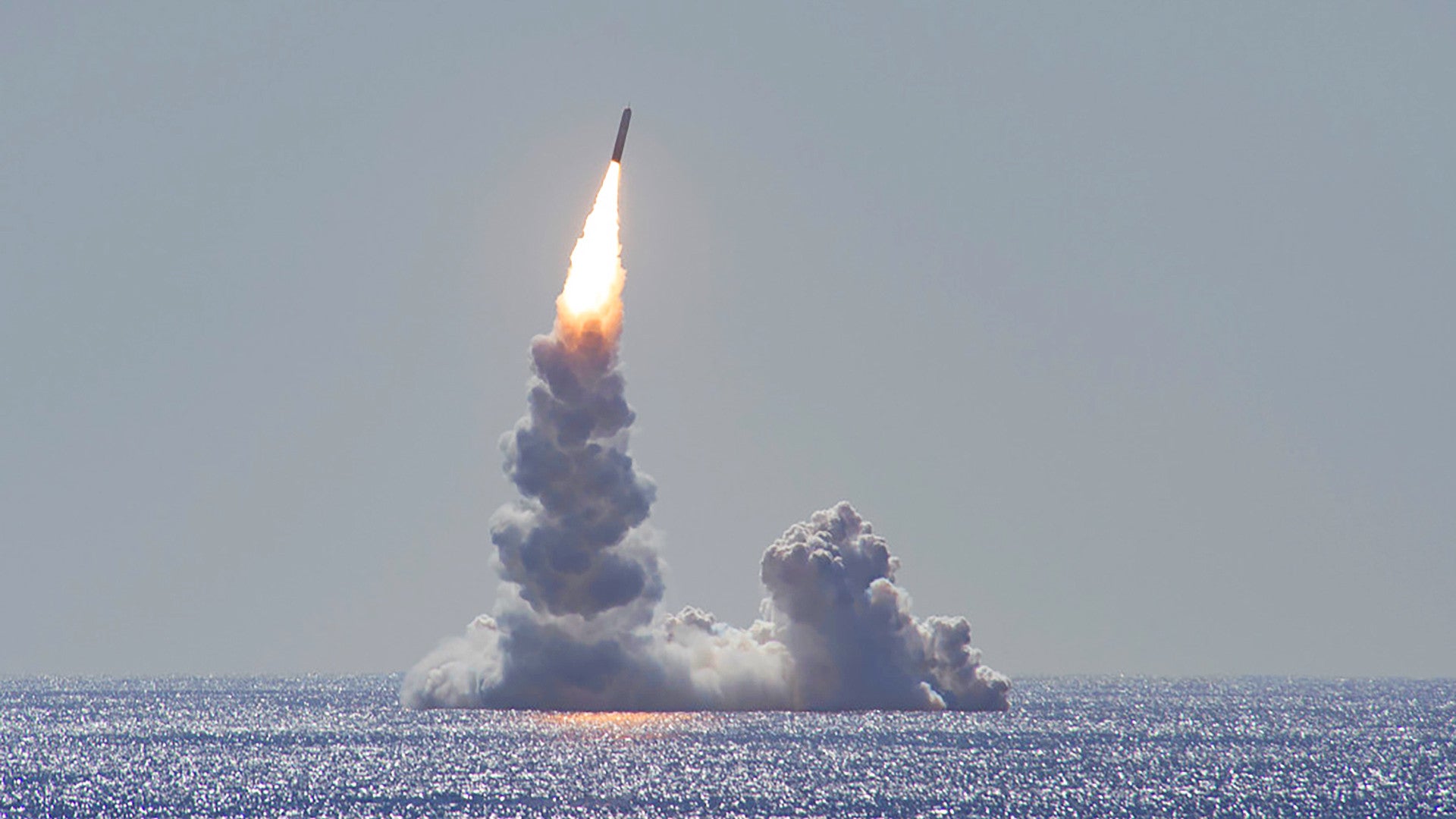The U.S. Navy has officially confirmed that it carried out a test of a Trident D5 submarine-launched ballistic missile over the Atlantic Ocean earlier this week. An Ohio class ballistic missile submarine, or SSBN, fired the weapon, which did not carry any live nuclear warheads, from within the service’s Eastern Range off the coast of Florida, which had quickly grabbed the attention of locals, as you can read about in The War Zone‘s initial reporting.
The Navy’s Strategic Systems Programs (SSP) office provided additional details about the test to The War Zone in a statement on Feb. 10, 2021. SSP oversees the development, acquisition, and sustainment of strategic weapons systems, including the Trident D5 and the Ohio class submarines that presently carry them, as well as work on the future Columbia class ballistic missile submarines. The service did not name the particular submarine that fired the missile.

“Navy Strategic Systems Programs conducted a scheduled Trident II (D5) missile test flight at sea from an Ohio Class SSBN, in the Eastern Range off the east coast of Florida, on February 9th, 2021,” Jeff Fatora, an SSP spokesperson, said. “This test was part of a scheduled, ongoing system evaluation test.”
“Launches are conducted on a frequent, recurring basis to ensure the continued reliability of the system. Each test activity provides valuable information about our systems, thus contributing to assurance in our capabilities,” he continued. “Test missiles are not armed, and Strategic Systems Programs does not routinely announce missile testing. Information regarding the test launch of Trident II (D5) missiles is classified before the launch.”
It’s certainly true that Trident test launches occur regularly, but the Navy does proactively issue press releases regarding them, as well. It certainly seems curious that the Navy did not even issue a simple confirmation quickly after it became clear that the test had caught public attention, especially in Florida, where the comet-like trail had sparked reports of UFOs.


Publicly available notices to airmen (NOTAM) had already outlined areas where parts of a missile were expected to fall on Feb. 9, which aligned almost perfectly with previous Atlantic Trident test launches. This includes a spectacularly failed launch in 2016 from a Vanguard class ballistic missile submarine belonging to the U.K. Royal Navy, which also fields Trident D5s as part of an arrangement with the United States. In that instance, the missile reportedly flew in the completely wrong direction and was self-destructed in midair after it looked to be heading toward Florida proper. It was not initially clear which Navy had fired the missile in this most recent test.
However, when The War Zone contacted the Navy’s office of the Chief of Information (CHINFO), the service’s top public affairs office, yesterday, we were initially redirected to the U.S. Army for unclear reasons.
“Army Futures Command Future Vertical Lift Cross Functional Team is currently participating in a Spike Non-Line-of-Sight [Spike-NLOS] Missile experimentation in Florida,” Robyn Mack, the Public Affairs Chief for Army Futures Command, told us. “The tests are part of our Project Convergence campaign of learning designed to inform, develop, and integrate an interoperable Joint Force that is capable of multi-domain operations at echelon.”
Mack also said that an overwater test of the Spike-NLOS missile had occurred earlier this week. What was observed in flight off the Florida coast was clearly not this missile, though, which is a much smaller and shorter-range weapon than a Trident. The Army is working toward fielding Spike-NLOS as a new extended-range weapon for current and future helicopters.

The War Zone was subsequently directed to the Office of the Secretary of Defense and, from there, to SSP. In the end, there is no indication, whatsoever, that the Army was in any way involved in this Trident D5 test.
As for what the purpose of this Trident D5 “system evaluation test” was, it remains unclear. There is a need, as SSP’s Fatora said, to regularly conduct tests of these missiles to ensure their continued reliability and to demonstrate that capability in a way that potential adversaries can see, at least to some degree, to help maintain deterrence.
There may be an additional need to conduct end-to-end tests of Trident D5s that reflect the introduction of the new W76-2 low-yield warhead for those missiles, the last examples of which were delivered to the Navy in 2020. The W76-2 program has been a contentious and controversial issue. Proponents argue that they provide essential flexibility to deter a lower-tier of threats than could be responded to with existing warheads, while critics have raised fears they only lower the threshold for the use of nuclear weapons in a future conflict. You can read more about these nuclear weapons, which President Joe Biden has previously called a “bad idea,” and the issues surrounding them in this past War Zone piece.

An improved version of the W88 warhead, also used on the Trident D5s, is in development, as well, though that work has suffered delays in the past few years. Last year, the Department of Energy’s National Nuclear Security Administration (NNSA), which oversees U.S. nuclear weapon development, also revealed that it had started developing a new warhead for the Tridents, called the W93. If it does ultimately enter service, the W93 looks set to be the first entirely new warhead design to enter the U.S. nuclear stockpile since the first W88s were delivered in 1989.
Ohio class submarines have also been involved in the testing of new hypersonic weapons, including a design the Navy is developing together with the Army.
This latest Trident test also notably comes after the United States and Russia agreed to extend the New Strategic Arms Reduction Treaty (New START) through 2026. That agreement places limits on the strategic arsenals of both countries, including provisions that impact how many submarine-launched ballistic missiles each country can have and how many individual warheads each of those weapons can hold. Each Trident D5 can hold up to 14 warheads, but they are typically only loaded with five or six at a time due to New START, as well as preceding arms control deals with Russia.
Whatever the case, we now know for sure that what people saw flying over the Atlantic off the coast of Florida earlier this week was a Trident missile fired from a Navy submarine.
Contact the author: joe@thedrive.com
